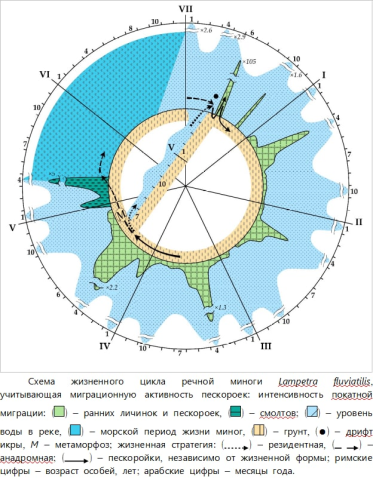
Perennial studies of the migration activity of lamprey allow on the one hand to detect new patterns and mechanisms of this phenomenon, and on the other, to adjust already established ideas about the migrations of this group of animals. Summing up the intermediate of the work on the rivers of the Leningrad region, which were started in 2014, employees of the laboratory of behavior of lower vertebrates of the A.N. Severtsov IEE RAS proposed changes to the existing Lampetra Fluviatilis Lampetra Fluviatilis.
Based on the generalization of their own long-term research and literature data, it was revealed that the migration activity of the larvae of the Lampetra Fluviatilis does not fade after the initial resettlement from the nest, but the entire larval phase continues. The ammocoetes (larvae) are mobile and move in the form of downstream migration. As a result, they are redistributed along the riverbed and beyond, falling into the mouth of the rivers, their deltas and in standing ponds (lakes, reservoirs, spaced seas). Migrants master new habitats and provide a connection between parts of the population of different watercourses.
Previously, the larval stage of development in the life cycles of lampreys was designated as “sedentary” (sedentary stage), based on their hidden sedentary lifestyle and in no way taking into account migratory activity. In the proposed new scheme of the life cycle of the river lamprey, emphasis is placed on the migration of the ammocoetes and the relationship of this phenomenon with the water level in the reservoir. With a high degree of probability, the above is true not only for the river lamprey, but also for the other lamprey species living in similar conditions.
Link to the article: Zvezdin A.O., Kucheryavyy A.V., Pavlov D.S. 2022. The place and role of downstream migration of ammocoetes in the life cycle of the European river lamprey Lampetra fluviatilis (Petromyzontidae) // Journal of Ichthyology. Vol. 62. No. 7. P. 1269–1283. DOI: 10.1134/S0032945222060352
